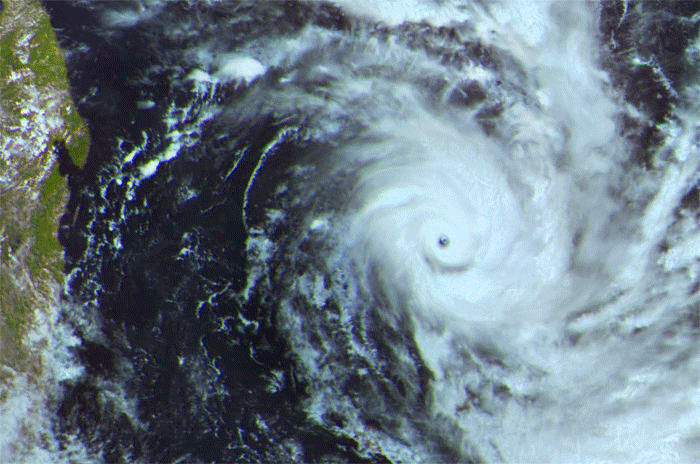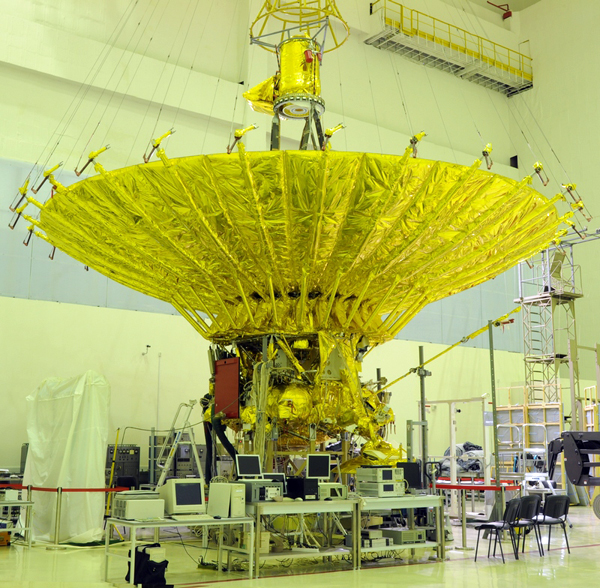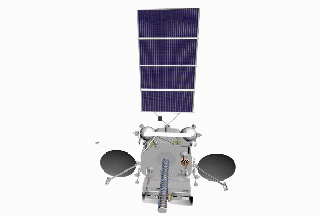Second Life "Electro-L"

I pay debts for 2014. This is not news, but I just could not not write about it: "Electro-L" was resurrected! He is sick, but alive, and his pictures are updated again on an open FTP server (login / password electro).
In November, a real detective intrigue around the Electro-L satellite unfolded in our media. At first, one Roscosmos official confirmed the information known since May that the satellite was not able to deliver images of the Earth due to a faulty flywheel control complex (MFCM). But the developers of the camera for "Electro-L", suddenly said that the camera not only continues to function successfully, but still delivers images of good quality. The camera did not break, we knew that, but after all the non-working flywheel engines put an end to the shooting. How so?
Let me remind you: the meteorological satellite "Electro-L" from February 2011 to March 2014 every half hour shot the eastern hemisphere of the Earth from a distance of 36 thousand km and with a resolution of up to 1 km. Full-size frames of one hundred thirty megapixels allowed us to observe the movement of clouds and weather conditions throughout the hemisphere. Along the way, it was possible to see the shadow of the moon passing through the Earth during solar eclipses ; trail of the Chelyabinsk meteorite ; smoke of large fires and other large-scale events on our side of the ball.
')

Here, for example, shooting from January 13 of typhoon "Banshe", which still wanders off the coast of Madagascar
Typhoon to desktop (no animation).
High accuracy of shooting was achieved with the help of flywheel engines - mechanical devices, which, due to the gyroscopic effect, made it possible to keep the device stationary relative to the surface of the Earth. At the end of March 2014, the flywheel engine control system failed. Shooting accuracy was lost. The satellite still has stabilization rocket engines, but they are not suitable for shooting. The fact is that the Electro-L is not just a camera, but a scanner that works on the office principle by scanning the telescope's field of view. Only instead of a moving rail - swivel mirror. In zero gravity, the movement of the mirror affected the entire satellite, it was deflected in the opposite direction, very slightly, but this was enough to spoil the frame.

The impossibility of high-quality shooting without KUDM became clear as early as May, so I did not at all expect miracles from the old Electro-L, who continued to work as a Rosgidromet repeater. The server with the pictures was not updated and I was waiting for "Electro-L2", which they promise in the first half of 2015. Therefore, the words: " Works and shoots ", said in November, came as a surprise. And it would be fine just to say, they also posted the pictures! True, only two, made back in October. It somehow did not fit with the statement "the camera continues to give a stable result." But better than nothing.
And so, on December 14, the message arrives in the mail: "KUDM works again. Starting tomorrow, we will resume shooting." This is great news! Restore the performance of devices that six months ago recognized as non-working - this is an engineering feat. Especially perfect from a distance of 36 thousand km. But, in my opinion, this feat then became socially significant when the pictures again returned to open access.
Finally, on the evening of December 15, when FTP was updated, and there were results of shooting for the whole week, it was time to shout "hurray" and say " thank you ". Unfortunately, the satellite never returned to the previous round-the-clock mode. Filming is only working time in Moscow, when experts can monitor his health. And not all the days, but, most importantly, the apparatus is alive and the struggle for its health goes every day.
And another such moment: the work of "Electro-L" is important for world astrophysics. The experience gained by engineers will extend the life of another, more important, for the fundamental science, apparatus - Spectr-R, which works in the international project " Radioastron ". This radio telescope studies the far corners of the universe, and the longer it works, the more we learn about it.

Electro-L and Spectr-R are built on the basis of a single satellite platform Navigator, produced by NPO Lavochkina. Electro-L flew half a radio radio telescope six months earlier, so all the problems arising on its platform can be repeated on the Spectr-R. Accordingly, if engineers are ready for them, then the study of the Universe in the radio band can be extended.

There was only one question left: “How did you manage to perform this miracle of the resurrection?”. Traditionally, Roskosmos does not like to admit its own mistakes, miscalculations and failures, so it is reluctant to talk about Electro-L. Not even announced the December "miracle of the resurrection." After all, to write the news "Sputnik again earned" will have to admit that he had not previously worked. Such a position is logical for any officials, but from the point of view of public relations, PR in the good sense of the word is a mistake. It is a sin not to use such a positive reason and not to tell society about the achievement of its own specialists. After all, shyly keeping silent about the returned "Electro-L" had to keep silent about the merits of technical specialists: designers, engineers, programmers, who had been struggling with the problem for half a year, and solved it!
Only on the website of the Scientific Center for Earth Operational Monitoring was it possible to find a modest entry :
" Through sustained and painstaking research, the stabilization of the spacecraft was achieved and the possibility of using the main MSU-GS device ... the work is underway to improve the quality of information and increase the number of reception sessions. "
I do not know if they received an award for their work, but it was possible to praise! It's free, and it's nice to people. And to everyone: everyone will work better and be proud of his work, if he sees that his efforts and achievements are appreciated. And from the society’s side, the credibility of the industry will increase when people realize that the national cosmonautics is with them "both in grief and in joy."
What prevented?
Secrecy? I know that some of them cover up their unwillingness to communicate with the press and the public. But “Electro-L” is a civilian satellite, I don’t really know how a miracle and who decided to post all his pictures in open access, but if we’ve started a policy of openness, then we should continue it.
No time? This is easier to believe. Six people press service to the entire space agency - it is catastrophically small. But here is a question of priorities. Either find the time and tell which engineers did a good job, repaired the satellite, the only one in its class for Russia, or write about another interesting state committee that made interesting decisions to no one.
I hope Roskosmos or ORKK (RKS, TsNIIMash, NPOL ... at least someone), will perform another miracle - a miracle of candor, and will find an opportunity to talk about the merits of their own engineers. This post can be considered an open letter to the native space agency: guys, let's be more friendly and honest to each other.
PS Yesterday reported that the old problem got out again. There will be no pictures yet. Perhaps absolutely. But we can always keep the memory of “Electro-L” on our desktops, and in our hearts. He worked hard, and all the people who stood behind him.

On the desktop. Another option in the "real" colors.
Source: https://habr.com/ru/post/375625/
All Articles